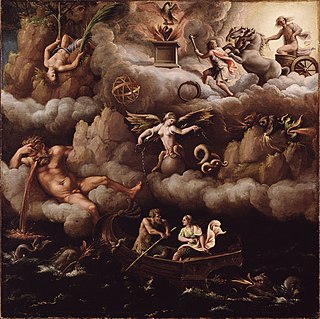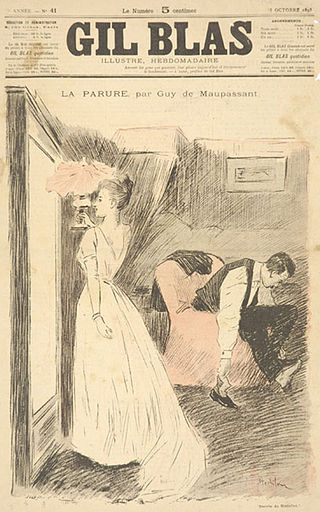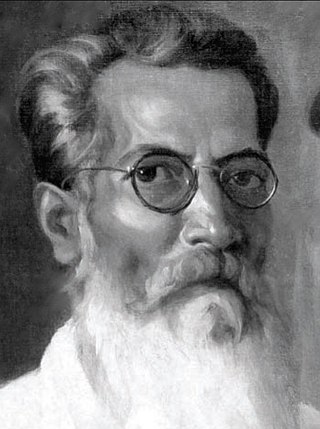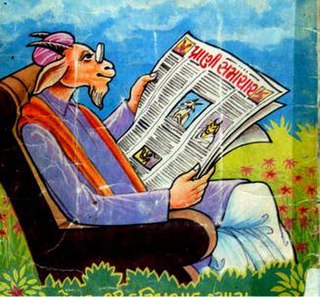Related Research Articles

A monster is a type of fictional creature found in horror, fantasy, science fiction, folklore, mythology and religion. Monsters are very often depicted as dangerous and aggressive, with a strange or grotesque appearance that causes terror and fear, often in humans. Monsters usually resemble bizarre, deformed, otherworldly and/or mutated animals or entirely unique creatures of varying sizes, but may also take a human form, such as mutants, ghosts, spirits, zombies, or cannibals, among other things. They may or may not have supernatural powers, but are usually capable of killing or causing some form of destruction, threatening the social or moral order of the human world in the process.

Mary Louise Brooks was an American film actress during the 1920s and 1930s. She is regarded today as an icon of the flapper culture, in part due to the bob hairstyle that she helped popularize during the prime of her career.

Mother India is a 1957 Indian epic drama film, directed by Mehboob Khan and starring Nargis, Sunil Dutt, Rajendra Kumar and Raaj Kumar. A remake of Khan's earlier film Aurat (1940), it is the story of a poverty-stricken village woman named Radha (Nargis), who in the absence of her husband, struggles to raise her sons and survive against a cunning money-lender amidst many troubles.

Narsinh Mehta, also known as Narsinh Bhagat, was a 15th-century poet-saint of Gujarat, India, honored as the first poet, or Adi Kavi, of the Gujarati language. Narsinh Mehta is member of Nagar Brahman community. Narsinh became a devotee of Krishna, and dedicated his life to composing poetic works described as bhakti, or devotion towards Krishna. His bhajans have remained popular in Gujarat and Rajasthan for over 5 centuries. Most notably, his composition Vaishnav Jan To was Mahatma Gandhi's favorite and became popular with freedom fighters across India.

"The Necklace" is a short story by French writer Guy de Maupassant. It is known for its twist ending, which was a hallmark of de Maupassant's style. The story was first published on 17 February 1884 in the French newspaper Le Gaulois.

The Small Bachelor is a novel by P. G. Wodehouse, first published in the United Kingdom on 28 April 1927 by Methuen & Co., London, and in the United States on 17 June 1927 by George H. Doran, New York.

Rebecca "Becky" Sharp, later describing herself as Rebecca, Lady Crawley, is the main protagonist of William Makepeace Thackeray's 1847–48 novel Vanity Fair. She is presented as a cynical social climber who uses her charms to fascinate and seduce upper-class men. This is in contrast with the clinging, dependent Amelia Sedley, her friend from school. Becky then uses Amelia as a stepping stone to gain social position. Sharp functions as a picara—a picaresque heroine—by being a social outsider who is able to expose the manners of the gentry to ridicule.

The Cocoanuts is a musical with music and lyrics by Irving Berlin and a book by George S. Kaufman, with additional text by Morrie Ryskind.

The Masked Bride is a 1925 American silent romantic drama film directed by Christy Cabanne and starring Mae Murray, Francis X. Bushman, and Basil Rathbone. It is currently a lost film.

Baburao Krishnarao Mestry, popularly known as Baburao Painter was an Indian filmmaker and artist. He was a man of many talents with proficiency in painting, sculpture, film production, photography, and mechanical engineering.

Saraswatichandra is a Gujarati novel by Govardhanram Madhavaram Tripathi, an author of early twentieth century from Gujarat, India. Set in 19th-century India, It is acclaimed as one of the masterpiece of Gujarati literature. Though the novel was published in four parts, each part has a distinct thematic content, its own cast of characters and independent beginnings and ends. It was adapted into several plays, radio plays, films and TV series. It was well received by the number of critics, and was translated into several Indian languages, along with English. However, Suresh Joshi, a strong proponent of formalism theory, criticized the novel for its structural failure.

"Fallen woman" is an archaic term which was used to describe a woman who has "lost her innocence", and fallen from the grace of God. In 19th-century Britain especially, the meaning came to be closely associated with the loss or surrender of a woman's chastity and with female promiscuity. Its use was an expression of the belief that to be socially and morally acceptable, a woman's sexuality and experience should be entirely restricted to marriage, and that she should also be under the supervision and care of an authoritative man. Used when society offered few employment opportunities for women in times of crisis or hardship, the term was often more specifically associated with prostitution, which was regarded as both cause and effect of a woman being "fallen". The term is considered to be anachronistic in the 21st century, although it has considerable importance in social history and appears in many literary works.

Maria Forescu was an Austro-Hungarian-born Romanian opera singer and film actress. During the silent and talkies era of the German cinema, she appeared in several movies as a supporting actress. When Adolf Hitler came to power, Forescu, like other Jews of that period, was barred from her profession. Living undercover during the later years of World War II, she survived the Holocaust and died in 1947 in East Berlin.

Olive Katherine Craddock was an Anglo-Indian dancer trained in British India who danced under the name Roshanara. She was known for showing central Indian dance techniques in Britain and America. She died in her thirties from appendicitis.

Bakor Patel is children's literature character created by Hariprasad Vyas for talking animal stories. The stories were published in Gandiv, a children's biweekly in Gujarati language by Gandiv Sahitya Mandir, Surat, Gujarat, India. The humorous stories about Bakor Patel first appeared in 1936 and continued till 1955. The stories included other anthropomorphic characters including his wife, Shakri Patlani. The stories were accompanied with an illustration and title printed in typical typography; drawn by two Surat based artist brothers, Tansukh and Mansukh. The character became the icon of Gujarati children's literature and was later adapted into a children's play.
"The Dowry of Angyar" is a science fiction short story by American writer Ursula K. Le Guin, first published in 1964. It is the first work of the Hainish Cycle. The story is set on a fictional planet of the star Fomalhaut, and follows a highborn woman as she tries to track down a family heirloom. It was framed by commentary from ethnologists studying the intelligent life-forms of the Fomalhaut system. The story drew from Norse mythology, including the legend of the Brísingamen, and explored the concept of time dilation. "The Dowry of Angyar" drew comments for its stylistic devices, while a review praised Le Guin's writing as "crystalline prose". It was later used as the prologue to Le Guin's 1966 novel Rocannon's World. In later publications, including in the 1975 anthology The Wind's Twelve Quarters, the story was given the title "Semley's Necklace".
Gujarati Natak Mandali (1878–89) and its successor Mumbai Gujarati Natak Mandali (1889–1948) was a theatre company in Bombay, British India. It made immense contribution to the Gujarati theatre, with productions of more than hundred plays, as well as the training and introducing of many major actors and directors.
Manilal Joshi was a film director of silent films from Indian cinema.
References
- 1 2 3 4 5 6 7 8 Rajadhyaksha, Ashish; Willemen, Paul (10 July 2014). Encyclopedia of Indian Cinema (revised ed.). Routledge. pp. 115, 248. ISBN 978-1-135-94325-7.
- ↑ Wollaeger, Mark; Eatough, Matt (31 May 2012). The Oxford Handbook of Global Modernisms. OUP USA. p. 630. ISBN 978-0-19-533890-4.
- 1 2 Sangita Gopal; Sujata Moorti (2008). Global Bollywood: Travels of Hindi Song and Dance. U of Minnesota Press. pp. 25–. ISBN 978-0-8166-4578-7 . Retrieved 17 May 2015.